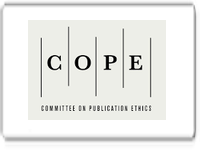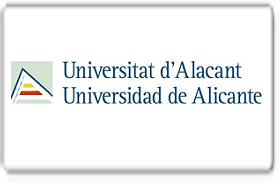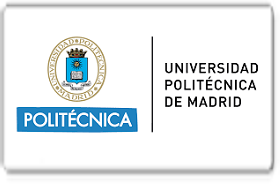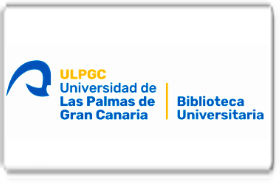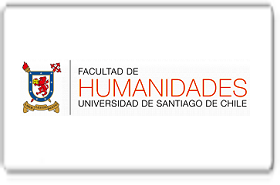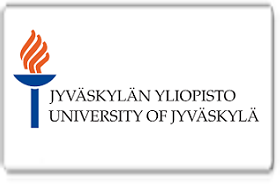Técnica de Masquelet en manejo de defectos óseos de diáfisis de la tibia
DOI:
https://doi.org/10.56048/MQR20225.7.4.2023.3053-3069Palabras clave:
Técnica de Masquelet, Defectos Óseos, Diáfisis Tibial, Regeneración Ósea, Cirugía OrtopédicaResumen
Introducción: La técnica de Masquelet se ha emergido como un método vital para el tratamiento de fracturas abiertas y defectos óseos. Se basa en la creación de una membrana inducida que ayuda en la regeneración ósea, ofreciendo una solución a los retos asociados con lesiones óseas graves.
El propósito fundamental de este análisis fue examinar la efectividad y los factores determinantes del éxito de la técnica de Masquelet en la reconstrucción de defectos óseos de la diáfisis de la tibia.
Esta revisión bibliográfica se llevó a cabo mediante la exploración de documentos en bases de datos como PubMed y Google Scholar, enfocándose en estudios que evaluaron la técnica de Masquelet. Se incluyeron artículos publicados entre 2017 y 2023, prestando especial atención a estudios de casos, ensayos clínicos y revisiones sistemáticas, No obstante, también se consideraron trabajos más antiguos para consolidar el desarrollo teórico.
Resultados: Los estudios mostraron una alta tasa de éxito en la regeneración ósea y la recuperación funcional. Factores como el tamaño del defecto, el tipo de espaciador utilizado y el tiempo entre las etapas del procedimiento influyeron significativamente en los resultados.
Conclusiones: El método de Masquelet demuestra ser eficaz en el tratamiento de defectos óseos de la diáfisis de la tibia. Sin embargo, se requiere atención cuidadosa a los factores que influyen en el éxito para optimizar los resultados.
Descargas
Métricas
Cited
DOI: 10.56048![]()
Citas
Adán Laguna, J. (2023). Fracturas abiertas: epidemiología, clasificación y manejo. Revista Electrónica de PortalesMedicos.com. https://www.revista-portalesmedicos.com/revista-medica/fracturas-abiertas-epidemiologia-clasificacion-y-manejo/
Alford, A. I., Nicolaou, D., Hake, M., & McBride‐Gagyi, S. (2021). Masquelet's induced membrane technique: review of current concepts and future directions. Journal of Orthopaedic Research®, 39(4), 707-718. https://onlinelibrary.wiley.com/doi/full/10.1002/jor.24978
Apard, T., Bigorre, N., Cronier, P., Duteille, F., Bizot, P., & Massin, P. (2017). Two-stage reconstruction of post-traumatic segmental tibia bone loss with nailing. Orthopaedics & Traumatology: Surgery & Research, 103(1), 1007-1011. https://www.sciencedirect.com/science/article/pii/S1877056810001052
Bernd, R. S., Chang-Wug, O., Thomas, K., John, M., Johannes, R. M., Ulrich, K., & Christian, K. (2023). Current Management of Diaphyseal Long Bone Defects—A Multidisciplinary and International Perspective. Journal of Clinical Medicine, 12(19), 6283. https://www.mdpi.com/2077-0383/12/19/6283
Caba-Doussoux, P., Leon-Baltasar, J. L., Garcia-Fuentes, C., & Resines-Erasun, C. (2012). Damage control orthopaedics in severe polytrauma with femur fracture. Injury, 43, S42-S46. https://www.sciencedirect.com/science/article/abs/pii/S0020138313701785
Cheng, R., Li, M., Ma, T., Li, Z., Xu, Y., Sun, L., Lu, Y., Wang, Q., Xue, H., & Zhang, K. (2022). A meta-analysis of the Masquelet technique and the Ilizarov bone transport method for the treatment of infected bone defects in the lower extremities. Journal of Orthopaedic Surgery, 30(2), 1-9. https://doi.org/10.1177/10225536221102685
Demitri, S., Vicenti, G., Carrozzo, M., Bizzoca, D., De Franceschi, D., & Moretti, B. (2018). The Masquelet technique in the treatment of a non-infected open complex fracture of the distal tibia with severe bone and soft tissue loss: A case report. Injury, 49, S58-S62. https://www.sciencedirect.com/science/article/abs/pii/S0020138318307071
El-Hadidi, T. T., Soliman, H. M., Farouk, H. A., & Radwan, M. A. E. (2018). Staged bone grafting for the management of segmental long bone defects caused by trauma or infection using induced-membrane technique. Acta Orthop Belg, 84(4), 384-396. http://actaorthopaedica.be/assets/3/02-El-Hadidi.pdf
Expósito Ibáñez, E. (2021). Actualización de la Técnica de Masquelet en Pseudoartrosis: revisión sistemática. https://repositorio.unican.es/xmlui/handle/10902/23482
Fu, J., Wang, X., Wang, S., Chen, Z., Shen, J., Li, Z., & Xie, Z. (2023). Induced membrane technique combined with a retrograde intramedullary nail for the treatment of infected bone defects of the ankle. Scientific Reports, 13(1), 6690. https://www.nature.com/articles/s41598-023-34014-0
Giannoudis, P. V., Faour, O., Goff, T., Kanakaris, N., & Dimitriou, R. (2011). Masquelet technique for the treatment of bone defects: tips-tricks and future directions. Injury, 42(6), 591-598. https://www.sciencedirect.com/science/article/abs/pii/S0020138311001306
Giannoudis, P. V., Kanakaris, N. K., Einhorn, T. A., & Marsh, D. (2013). Interaction of bone morphogenetic proteins with cells of the osteoclast lineage: review of the existing evidence. Osteoporosis International, 18(12), 1565-1581. https://link.springer.com/article/10.1007/s00198-007-0441-x
Griffin, J. T., Landy, D. C., Sneed, C. R., Liu, B., Kavolus, M., Pectol, R. W., ... & Aneja, A. (2022). Masquelet technique for the tibia: a systematic review and meta-analysis of contemporary outcomes. Journal of Orthopaedic Trauma, 10-1097. https://journals.lww.com/jorthotrauma/abstract/2023/01000/masquelet_technique_for_the_tibia__a_systematic.13.aspx
Hatashita, S., Kawakami, R., Ejiri, S., Sasaki, N., Toshiki, N., Ito, M., ... & Hakozaki, M. (2021). 'Acute Masquelet technique' for reconstructing bone defects of an open lower limb fracture. European Journal of Trauma and Emergency Surgery, 47(4), 1153-1162). https://pubmed.ncbi.nlm.nih.gov/31894350/
Hsu, C. A., Chen, S. H., Chan, S. Y., & Yu, Y. H. (2020). The induced membrane technique for the management of segmental tibial defect or nonunion: a systematic review and meta-analysis. BioMed Research International, 2020, 1-9. https://www.hindawi.com/journals/bmri/2020/5893642/
Kevin C Chung, Hidemasa Yoneda. (2023) Surgical reconstruction of the upper extremity. All topics are updated as new evidence becomes available and our peer review process is complete. https://www.uptodate.com/contents/surgical-reconstruction-of-the-upper-extremity?search=Masquelet%20technique%20in%20open%20fractures&source=search_result&selectedTitle=1~150&usage_type=default&display_rank=1#H2394610146
Lara-Villca, R., & Undurraga-Carmona, N. (2018). Técnica de membrana inducida en la reconstrucción de defectos óseos postraumáticos. Gaceta Médica Boliviana, 41(2), 18-20. http://www.scielo.org.bo/scielo.php?pid=S1012-29662018000200005&script=sci_arttext
Larsen, P., Elsoe, R., Hansen, S. H., Graven-Nielsen, T., Laessoe, U., & Rasmussen, S. (2015). Incidence and epidemiology of tibial shaft fractures. Injury, 46(4), 746-750. https://www.sciencedirect.com/science/article/abs/pii/S0020138314006743
Liodakis, E., Giannoudis, V. P., Sehmisch, S., Jha, A., & Giannoudis, P. V. (2022). Bone defect treatment: does the type and properties of the spacer affect the induction of Masquelet membrane? Evidence today. European Journal of Trauma and Emergency Surgery, 48(6), 4403-4424. https://link.springer.com/article/10.1007/s00068-022-02005-x
Masquelet, A. C., & Begue, T. (2010). The concept of induced membrane for reconstruction of long bone defects. Orthopedic Clinics, 41(1), 27-37. https://pubmed.ncbi.nlm.nih.gov/19931050/
Mathieu, L., Bilichtin, E., Durand, M., de l’Escalopier, N., Murison, J. C., Collombet, J. M., & Rigal, S. (2020). Masquelet technique for open tibia fractures in a military setting. European Journal of Trauma and Emergency Surgery, 46, 1099-1105. https://link.springer.com/article/10.1007/s00068-019-01217-y
Nwachukwu, B. U., Schairer, W. W., O’Dea, E., McCormick, F., & Lane, J. M. (2015). The Quality of Cost-Utility Analyses in Orthopedic Trauma. Orthopedics, 38(8), e673–e680. https://doi.org/10.3928/01477447-20150804-53
Oh, Y., Yoshii, T., & Okawa, A. (2019). Ankle arthrodesis using a modified Masquelet induced membrane technique for open ankle fracture with a substantial osteochondral defect: a case report of novel surgical technique. Injury, 50(11), 2128-2135. https://www.sciencedirect.com/science/article/pii/S0020138319305376
Seng, W. D., & Premchand, A. R. (2022). Application of Masquelet technique across bone regions-a case series. Trauma Case Reports, 37, 100591. https://www.sciencedirect.com/science/article/pii/S2352644021001965
Singh, S., Dawar, H., Raina, D., Rastogi, S., & Chaudhary, N. (2020). Masquelet technique for treatment of post-traumatic bone defects. International Journal of Orthopaedics Sciences, 6(2), 694-0. https://www.orthopaper.com/archives/2020/vol6issue2/PartK/6-2-82-830.pdf
Stafford, P. R., & Norris, B. L. (2010). Reamer-irrigator-aspirator bone graft and bi Masquelet technique for segmental bone defect nonunions: a review of 25 cases. Injury, 41, S72-S77. https://www.sciencedirect.com/science/article/abs/pii/S0020138310700140
Walker, M., Sharareh, B., & Mitchell, S. A. (2019). Masquelet reconstruction for posttraumatic segmental bone defects in the forearm. The Journal of Hand Surgery, 44(4), 342-e1. https://www.sciencedirect.com/science/article/abs/pii/S0363502317319524
Wang, P., Wu, Y., Rui, Y., Wang, J., Liu, J., & Ma, Y. (2021). Masquelet technique for reconstructing bone defects in open lower limb fracture: Analysis of the relationship between bone defect and bone graft. Injury, 52(4), 988-995). https://pubmed.ncbi.nlm.nih.gov/33386161/
Publicado
Cómo citar
Número
Sección
Categorías
Licencia

Esta obra está bajo una licencia internacional Creative Commons Atribución 4.0.
Los autores se comprometen a respetar la información académica de otros autores, y a ceder los derechos de autor a la Revista MQRInvestigar, para que el artículo pueda ser editado, publicado y distribuido. El contenido de los artículos científicos y de las publicaciones que aparecen en la revista es responsabilidad exclusiva de sus autores. La distribución de los artículos publicados se realiza bajo una licencia 


















